Moth wing structure, composition absorb bat echolocation calls
Tag: ACOUSTICS
Newborns on ventilators can now be better protected from a common breathing tube incident
After 30 years of development, a medical device designed to continuously monitor the airways of the tiniest ventilated patients could become the standard of care for babies worldwide
Potential Vocal Tracking App Could Detect Depression Changes
According to the World Health Organization, more than 264 million people worldwide have Major Depression Disorder and another 20 million have schizophrenia. During the 180th ASA Meeting, Carol Espy-Wilson from the University of Maryland,will discuss how a person’s mental health status is reflected in the coordination of speech gestures. The keynote lecture, “Speech Acoustics and Mental Health Assessment,” will take place Tuesday, June 8.
Noisy Homes During Pandemic Drive Future Design Choices
Due to strict lockdowns, many of us have seen and heard our family and neighbors much more than ever before. During the 180th ASA Meeting, Ayca Sentop Dümen and Konca Saher from the Turkish Acoustical Society will discuss the effects of pandemic-related noise on people’s satisfaction with their homes and how this may inform future design choices. Their presentation, “Noise annoyance in dwellings during the first wave of Covid-19,” will take place Tuesday, June 8.
Balancing Speech Intelligibility, Face Covering Effectiveness in Classrooms During the Pandemic
A better understanding of the impacts of face masks and shields on acoustic transmission in classrooms could help optimize educational settings. During the 180th ASA Meeting, Laura and Rich Ruhala from Kennesaw State University will talk about how various types of face coverings may affect students’ understanding of their teacher. Their presentation, “Acoustical transmission of face coverings used to reduce coronavirus transmission in a classroom environment,” will take place Tuesday, June 8.
Teaching Drones to Hear Screams from Catastrophe Victims
Unmanned aerial vehicles may help emergency crews find those in need and provide situational awareness over a large area. During the 180th ASA Meeting, Macarena Varela from Fraunhofer FKIE will describe how a system using an array of microphones and advanced processing techniques could be a lifesaver for disaster victims. The session, “Bearing Estimation of Screams Using a Volumetric Microphone Array Mounted on a UAV,” will take place Tuesday, June 8.
New population of blue whales discovered with help of bomb detectors
It was the whales’ singing that gave them away
Acoustics in Focus: Virtual Press Conference Schedule for 180th Meeting of Acoustical Society of America
Press conferences at the 180th ASA Meeting will cover the latest in acoustical research during the Acoustics in Focus meeting. The virtual press conferences will take place each day of the meeting and offer reporters and outlets the opportunity to hear key presenters talk about their research. To ensure the safety of attendees, volunteers, and ASA staff, Acoustics in Focus will be hosted entirely online.
Acoustics in Focus: Virtual press conference schedule for 180th ASA Meeting
Media representatives can register to attend; topics cover pandemic, vocals, moth wings
MEDIA ADVISORY: Story, Feature Ideas from 180th Meeting of the Acoustical Society of America
The 180th ASA Meeting, being held virtually June 8-10, will feature sessions on how the COVID-19 pandemic impacted hearing health, affected noise annoyance in urban settings, and adjusted how teachers talked and listened to their students. There will be presentations on how acoustics shapes speech in children, impacts mental health, and potentially signals health problems.
New technology ‘listens’ for endangered right whales
One of the world’s most endangered whale species could have added protection from threats posed by human marine activity, through technology developed by the University of East Anglia (UEA). In partnership with the Scottish Association for Marine Science (SAMS) and…
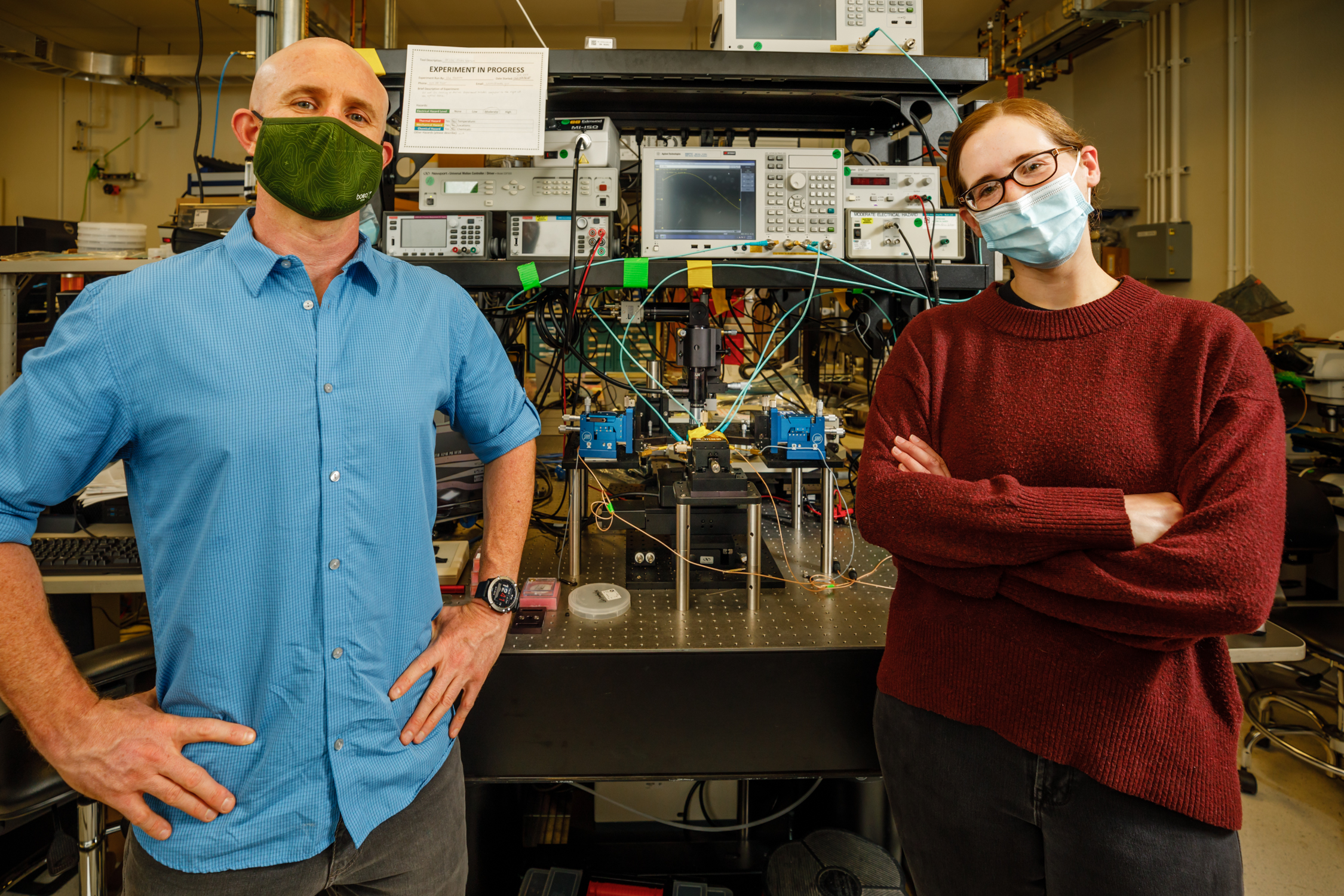
World’s smallest, best acoustic amplifier emerges from 50-year-old hypothesis
Scientists at Sandia National Laboratories have built the world’s smallest and best acoustic amplifier. And they did it using a concept that was all but abandoned for almost 50 years.
World’s smallest, best acoustic amplifier emerges from 50-year-old hypothesis
Acousto-electric devices reveal new road to miniaturizing wireless tech
Acoustic solutions made from natural fibers can reduce buildings’ carbon footprints
Aalto University researchers discovered that wood-based pulp fibers are also well-suited for making acoustic materials
Silicon chips combine light and ultrasound for better signal processing
The continued growth of wireless and cellular data traffic relies heavily on light waves. Microwave photonics is the field of technology that is dedicated to the distribution and processing of electrical information signals using optical means. Compared with traditional solutions…
Save-the-Date: Acoustics in Focus, June 8-10, Offers New Presentation Options
The Acoustical Society of America will hold its 180th meeting June 8-10. To ensure the safety of attendees, volunteers, and ASA staff, the June meeting, “Acoustics in Focus,” will be hosted entirely online with new features to ensure an exciting experience for attendees. Reporters are invited to attend the meeting at no cost and participate in a series of virtual press conferences featuring a selection of newsworthy research.
Study of marine noise highlights need to protect pristine Australian waters
New Curtin research has found urgent action is needed to ensure man-made underwater noise in Australian waters does not escalate to levels which could be harmful to marine animals, such as whales, and negatively impact our pristine oceans. Lead author…
Better hearing with optical cochlear implants
Understanding spoken words, developing normal speech – cochlear implants enable people with profound hearing impairment to gain a great deal in terms of quality of life. However, background noises are problematic, they significantly compromise the comprehension of speech of people…
Making music from spider webs
WASHINGTON, April 12, 2021 — Spiders are master builders, expertly weaving strands of silk into intricate 3D webs that serve as the spider’s home and hunting ground. If humans could enter the spider’s world, they could learn about web construction,…
Technology uses ‘single’ approach to develop electronics, acoustics
WEST LAFAYETTE, Ind. – A Purdue University innovator has developed a new approach to creating popular thin films used for devices across a broad range of fields, including optics, acoustics and electronics. Epitaxial lithium niobate (LNO) thin films are an…
Looking at optical Fano resonances under a new light
Scientists advance understanding of optical Fano resonances and show new ways to manipulate light with metamaterials
Tiny bubbles making large impact on medical ultrasound imaging
New research demonstrates ability to manipulate nanobubble size, acoustic resonance and, ultimately, ultrasound effectiveness
Simultaneous multicontrast OR-PAM from single laser source
Optical-resolution photoacoustic microscopy innovation enables simultaneous multicontrast imaging with shorter imaging time and improved accuracy
Optimal design for acoustic unobservability in water
Until now, it was only possible to optimize an acoustic cloaking structure for the air-environment. However, with this latest research, Acoustic cloak designed by topology optimization for acoustic-elastic coupled systems, published in the latest Applied Physics Letters, it is possible…
Ultrasonic cleaning of salad could reduce instances of food poisoning
A new study has shown that gentle streams of water carrying sound and microscopic air bubbles can clean bacteria from salad leaves more effectively than current washing methods used by suppliers and consumers. As well as reducing food poisoning, the…
New skills of Graphene: Tunable lattice vibrations
Without electronics and photonics, there would be no computers, smartphones, sensors, or information and communication technologies. In the coming years, the new field of phononics may further expand these options. That field is concerned with understanding and controlling lattice vibrations…
After Hurricane Irma, soundscape reveals resilient reef ecosystem
A new study from North Carolina State University reveals that the soundscapes of coral reef ecosystems can recover quickly from severe weather events such as hurricanes. The work also demonstrates that non-invasive monitoring is an important tool in shedding further…
Call for entries: Awards for science communication
The Acoustical Society of America is accepting submissions for its 2021 Science Communication Awards. Works should be intended for a general audience and will be judged on their ability to enhance the public’s understanding and appreciation of acoustics and related fields. The deadline for entries is April 1, 2021.
Listening to the call of the wild: Tracking deer movements using sound
Tokyo, Japan — In the marchland of Japan’s Oze National Park, keeping track of the deer population has been a difficult and time-consuming task for the park rangers. Now their lives could get much easier, thanks to a novel technique…
Nanodiamonds feel the heat
An international team of researchers created nanodiamond sensors that can act as both heat sources and thermometers, and is using them to measure the thermal conductivity inside living cells, which may lead to new diagnostics tools and cancer therapies
Research to advance environmental sound classification wins IEEE Best Paper Award
BROOKLYN, New York, January 13, 2021 – The paper ” Deep Convolutional Neural Networks and Data Augmentation for Environmental Sound Classification ,” has won the 2020 Institute of Electrical and Electronics Engineers (IEEE) Signal Processing Society (SPS) Signal Processing Letters…
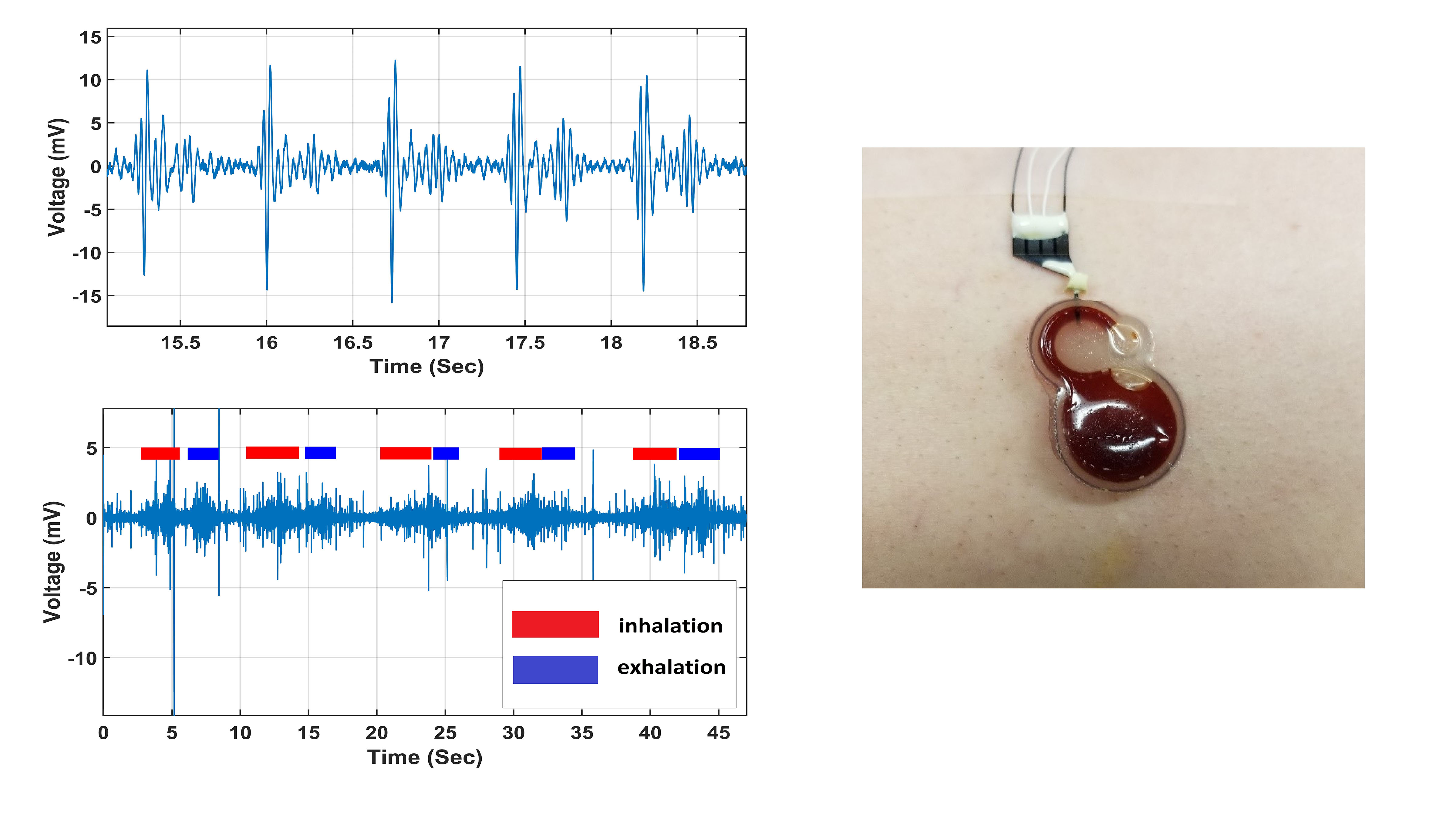
Wearable Electronics for Continuous Cardiac, Respiratory Monitoring
A small and inexpensive sensor, announced in Applied Physics Letters and based on an electrochemical system, could potentially be worn continuously by cardiac patients or others who require constant monitoring. A solution containing electrolyte substances is placed into a small circular cavity that is capped with a thin flexible diaphragm, allowing detection of subtle movements when placed on a patient’s chest. The authors suggest their sensor could be used for diagnosis of respiratory diseases.
Singing a tumor test song
Monitoring the stiffness of the tissue near a patient’s thyroid while they sing a note can allow medical professionals to determine the presence of a tumor.
Wearable electronics for continuous cardiac, respiratory monitoring
An inexpensive yet highly sensitive wearable sensor holds promise for detecting early COVID-19 symptoms and monitoring heart disease
Nanodroplets and ultrasound ‘drills’ prove effective at tackling tough blood clots
Engineering researchers have developed a new technique for eliminating particularly tough blood clots, using engineered nanodroplets and an ultrasound “drill” to break up the clots from the inside out. The technique has not yet gone through clinical testing. In vitro…
Disposable surgical masks best for being heard clearly when speaking, study finds
CHAMPAIGN, Ill. — Researcher Ryan Corey recently heard from a friend who teaches at a school where some of the students have hearing loss. The friend wanted to know if he had any ideas to help her communicate with these…
Sound waves spin droplets to concentrate, separate nanoparticles
New centrifuge-like device concentrates and separates biomedically important nanoparticles in tiny samples in less than a minute
Shorter building construction timelines could be possible with new sensor technology
Future building complex at Purdue University is a test bed for new technology measuring concrete strength
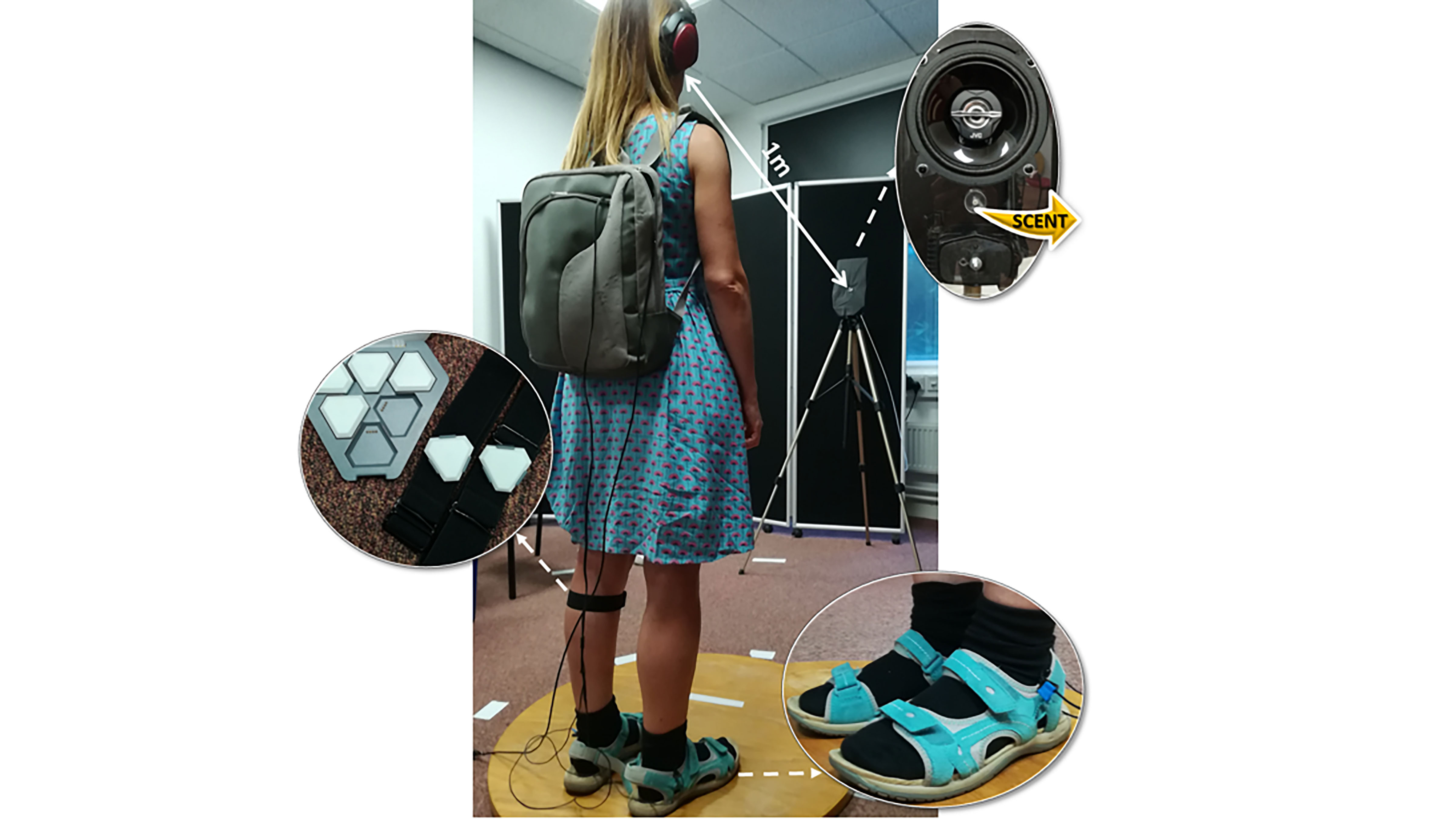
Sounds, Smells Could Sway Our Self-Image
A lemony scent and light sounds could change the way you feel about yourself. Previously, researchers have shown that visual and tactile stimulation can change a person’s perception of their own body weight. Research being presented by Giada Brianza at the 179th ASA Meeting, has found our hearing and sense of smell can also change how we feel about our self-image, which could help improve healthy behaviors.
Sounds, smells could sway our self-image
Lemony scents, light sounds could help promote better body image perceptions, health
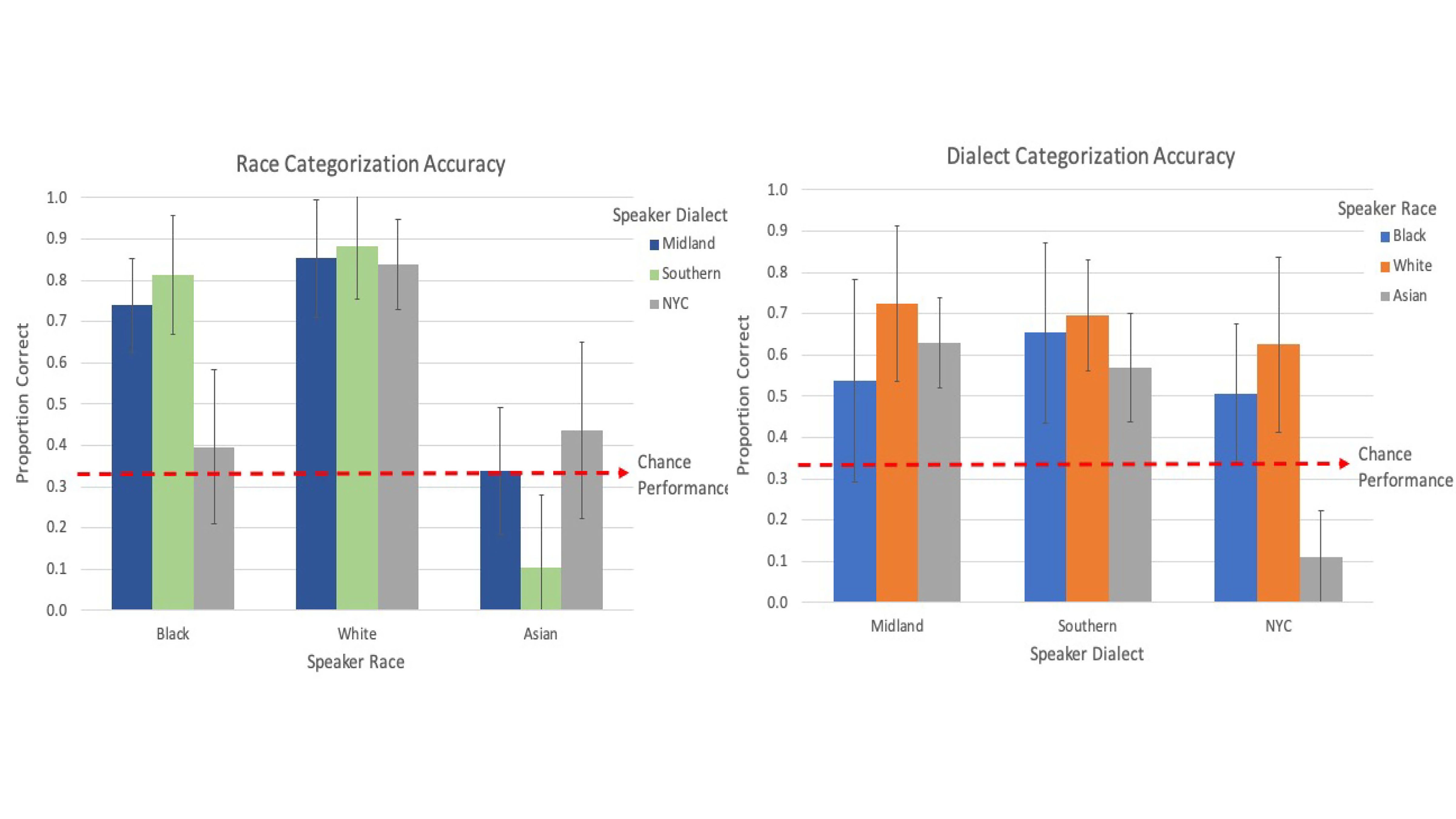
How Much Does the Way You Speak Reveal About You?
Listeners can extract a lot of information about a person from their acoustic speech signal. During the 179th ASA Meeting, Dec. 7-10, Tessa Bent, Emerson Wolff, and Jennifer Lentz will describe their study in which listeners were told to categorize 144 unique audio clips of monolingual English talkers into Midland, New York City, and Southern U.S. dialect regions, and Asian American, Black/African American, or white speakers.
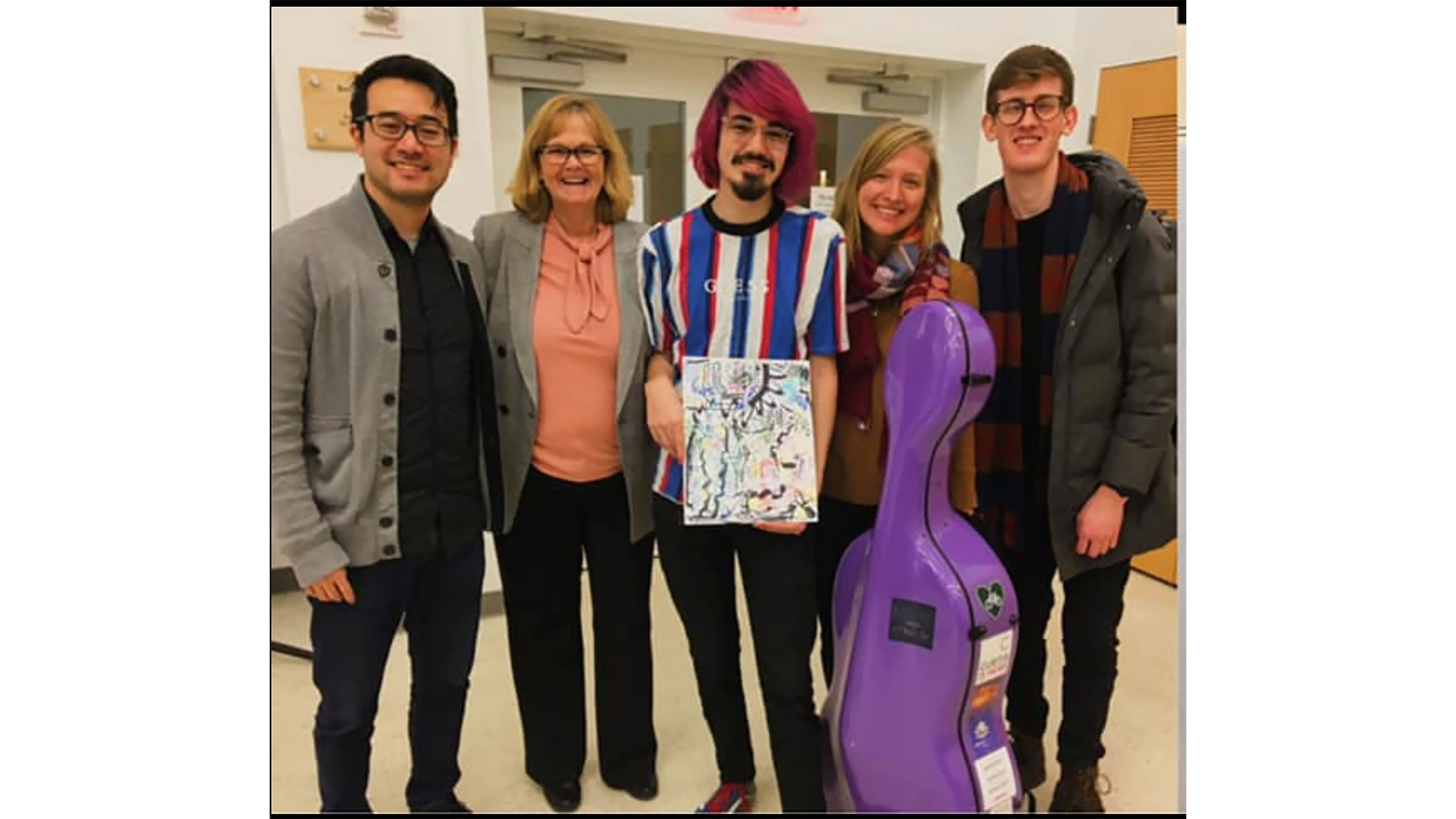
Hearing Tones, Elements Through Atomic Music
With each atom assigned a tonal signature based on its spectral signature, music can be a powerful tool for helping students understand atomic structure. Jill Linz is working toward synthesizing unique tones for each element to create an acoustic version of the periodic table. She will discuss her progress and the potential applications of the project at the 179th ASA Meeting, Dec. 7-10.

Lung Ultrasounds Could Help Determine COVID-19 Outcome
Researchers have developed a method using ultrasound imaging to score a patient’s lung health, which may help predict if a patient with COVID-19 will worsen. Using 14 points in the lungs, they looked for abnormalities and assigned each spot a score out of 3 based on its severity. Adding up all the points, the researchers found the total lung ultrasound score was higher for those who had a worsening outcome of COVID-19. Umberto Sabatini’s presentation will be a part of the 179th ASA Meeting of the Acoustical Society of America.
A day at the beach helps model how sound moves through coastal areas
Does wet sand affect how sound travels across a beach? Researchers set off to a coastal beach in North Carolina to test moisture levels and improve their models
Lung ultrasounds could help determine COVID-19 outcome
MELVILLE, N.Y., December 10, 2020 — For some, COVID-19 can result in severe pneumonia or even death, while others remain purely asymptomatic. A diagnostic tool could help physicians predict if a patient with COVID-19 will worsen. Researchers at the Policlinico…
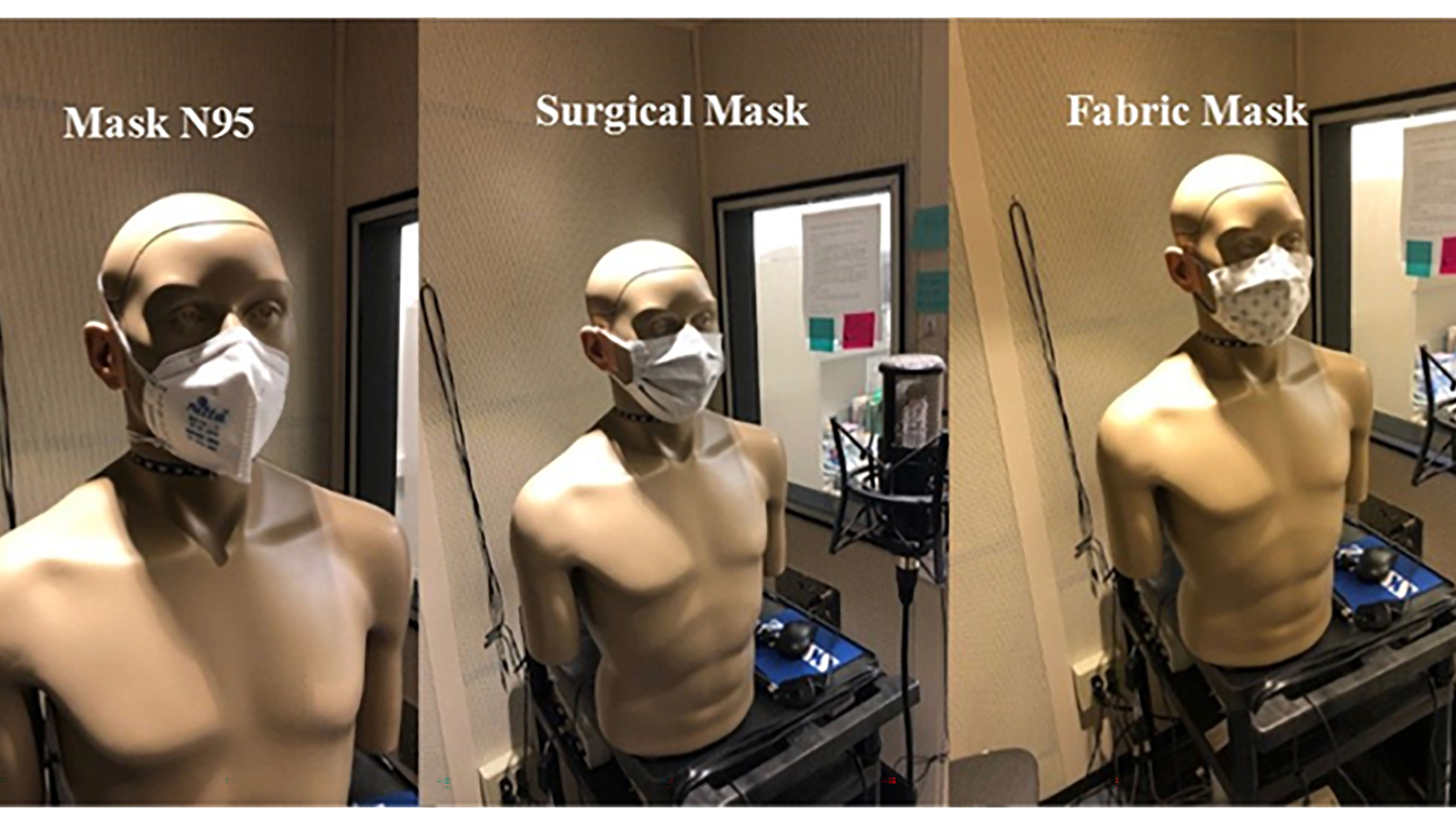
Masked Education: Which Face Coverings are Best for Student Comprehension?
With the ubiquity of masks due to the coronavirus pandemic, understanding speech has become difficult. This especially applies in classroom settings, where the presence of a mask and the acoustics of the room have an impact on students’ comprehension. Pasquale Bottalico has been studying the effects of masks on communication. He will discuss his findings on the best way to overcome hurdles in classroom auditory perception caused by facial coverings at the 179th ASA Meeting.
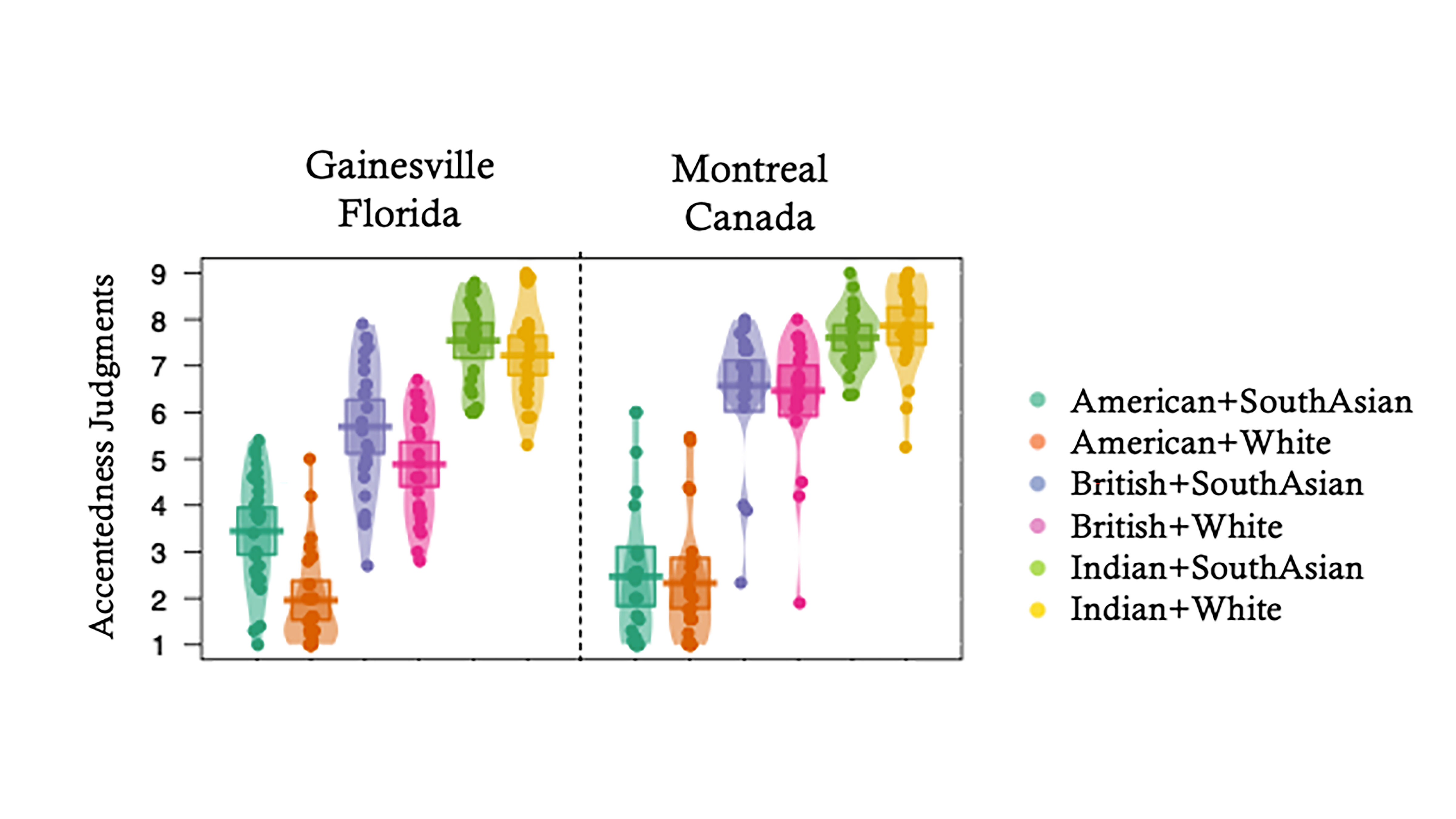
Accent Perception Depends on Backgrounds of Speaker, Listener
Visual cues can change listeners’ perception of others’ accents, and people’s past exposure to varied speech can also impact their perception of accents. Ethan Kutlu will discuss his team’s work testing the impact that visual input and linguistic diversity has on listeners’ perceived accentedness judgments in two different locations: Gainesville, Florida, and Montreal, Canada. The session will take place Dec. 9 as part of the 179th ASA Meeting.
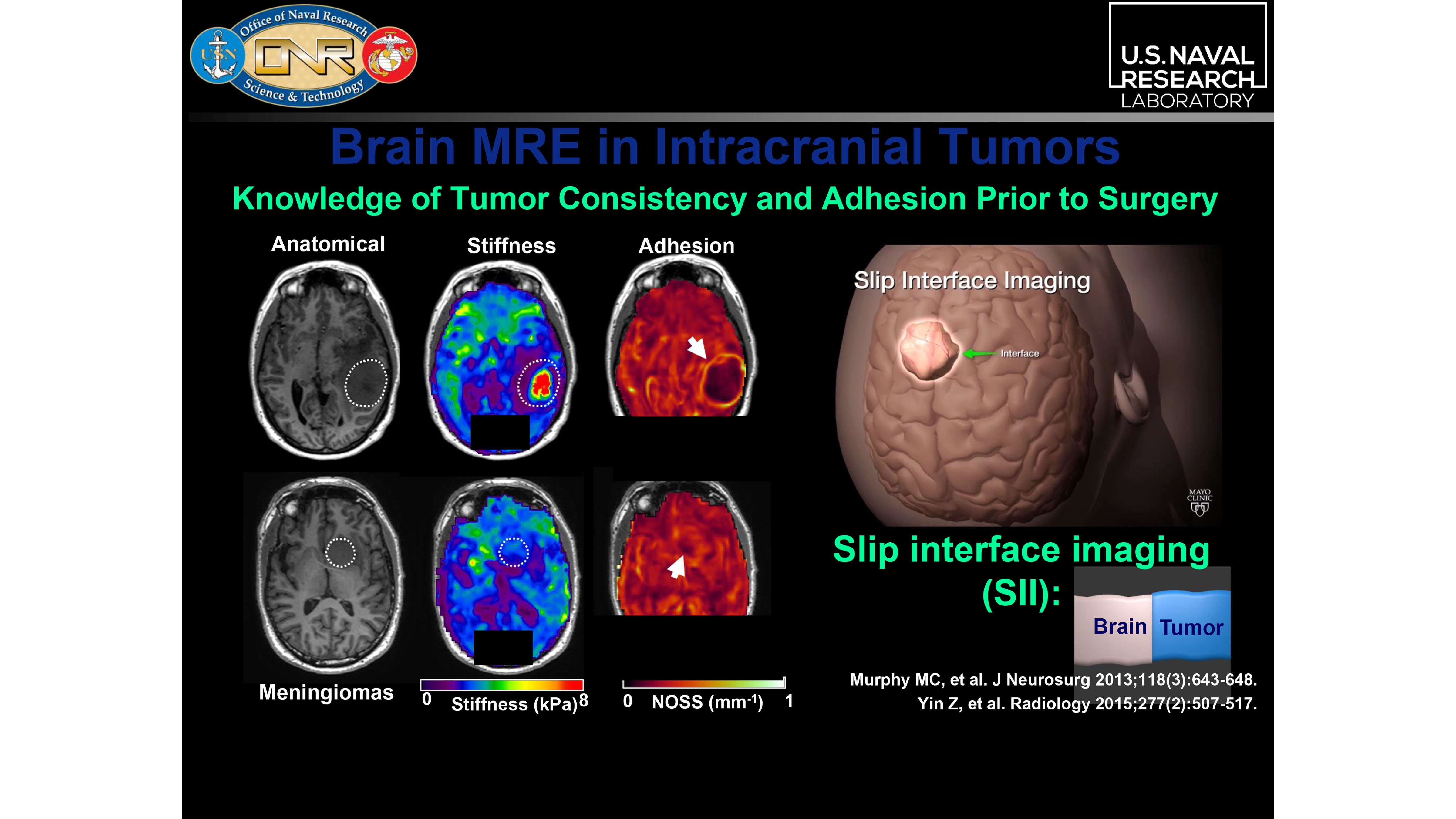
Noninvasive Way to Explore Traumatic Brain Injuries
A noninvasive method to measure the stiffness parameters along fibrous pathways within the brain is helping researchers explore traumatic brain injuries. The stiffness of these tissues can reveal clues about changes and pathologies within the brain’s gray and white matter. During the 179th ASA Meeting, Anthony J. Romano will describe the method known as waveguide elastography. Waveguide elastography merges magnetic resonance elastography and diffusion tensor imaging with a combination of isotropic and anisotropic inversion algorithms.
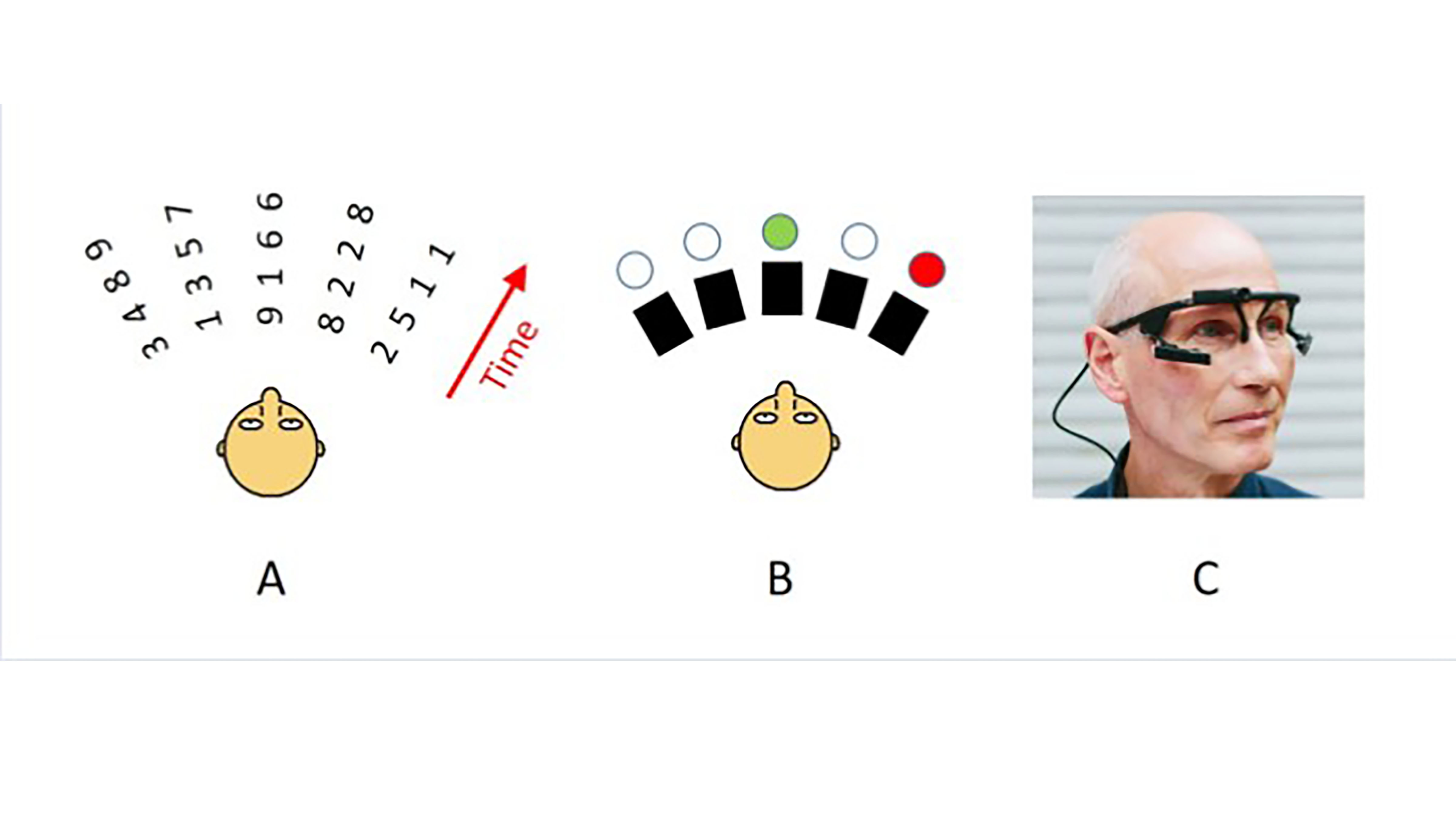
How Does Eye Position Affect ‘Cocktail Party’ Listening?
Several acoustic studies have shown that the position of your eyes determines where your visual spatial attention is directed, which automatically influences your auditory spatial attention. Researchers are currently exploring its impact on speech intelligibility. During the 179th ASA Meeting, Virginia Best will describe her work to determine whether there is a measurable effect of eye position within cocktail party listening situations.
How does eye position affect ‘cocktail party’ listening?
Eye position has a modest but measurable impact on speech intelligibility within a cocktail party setting.